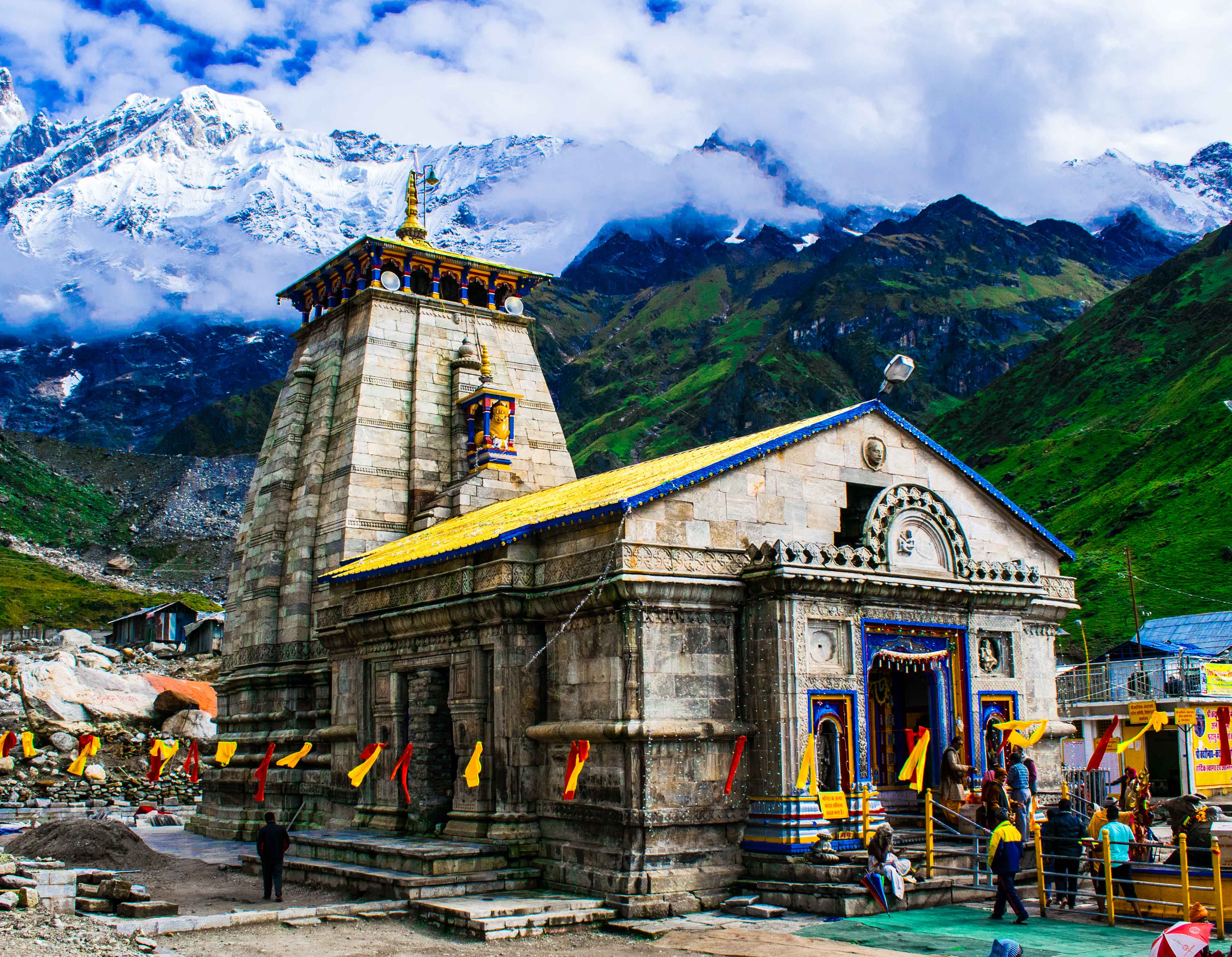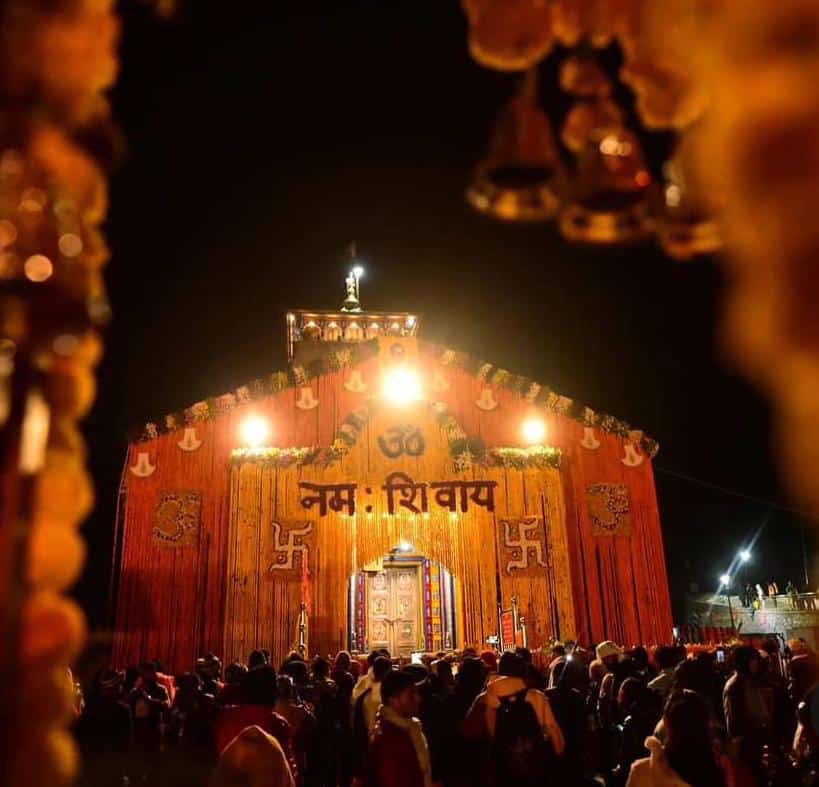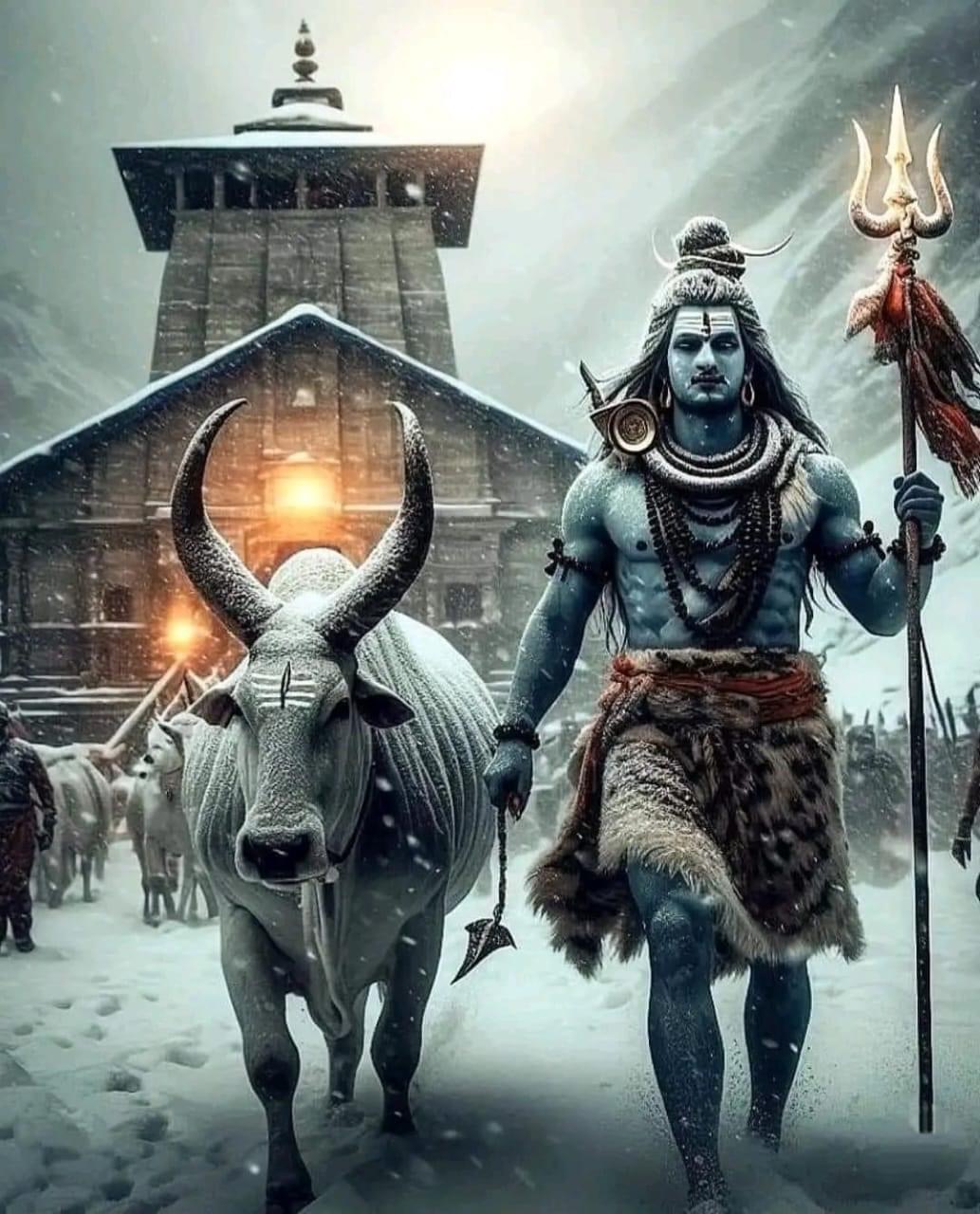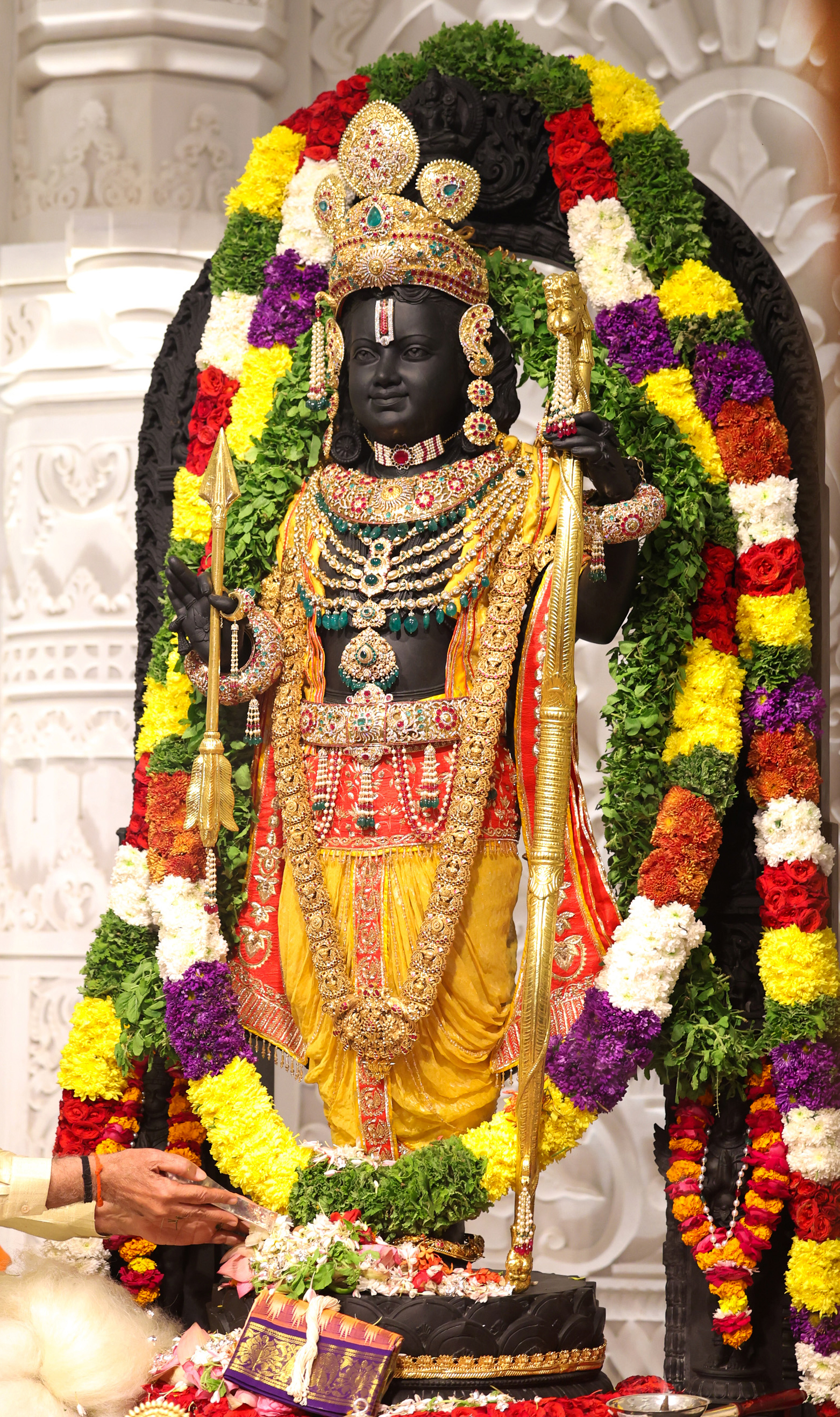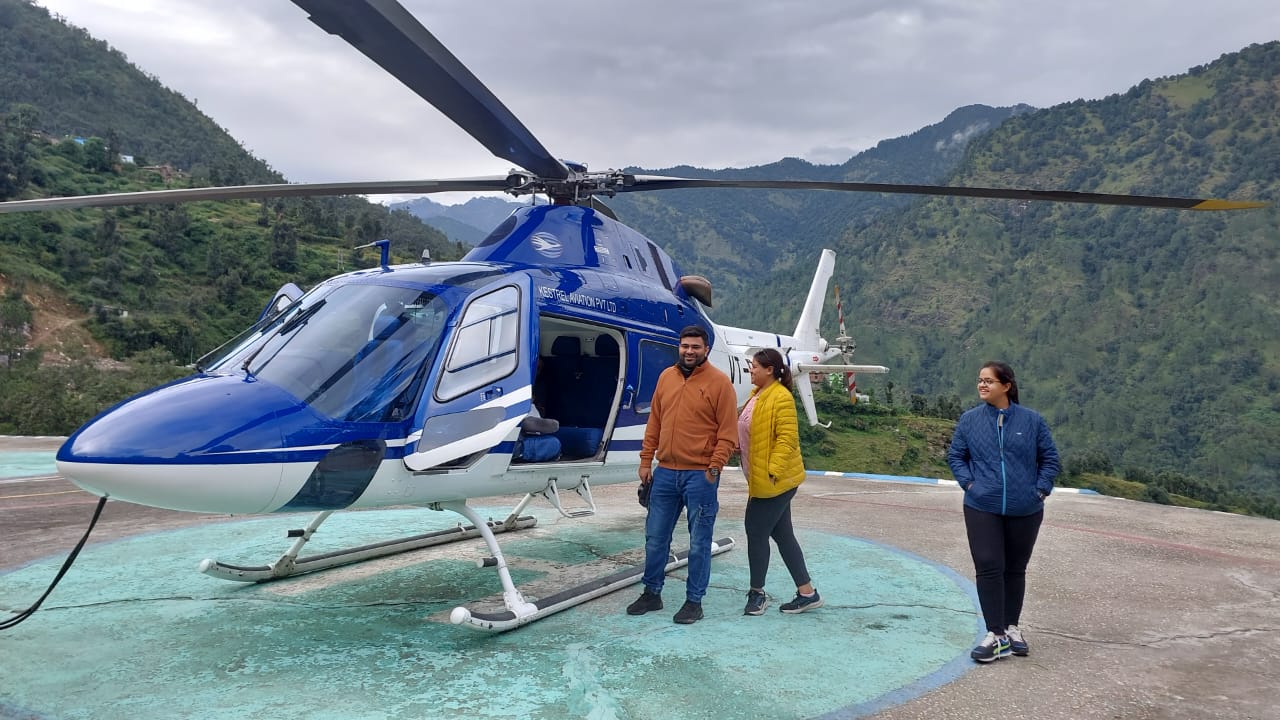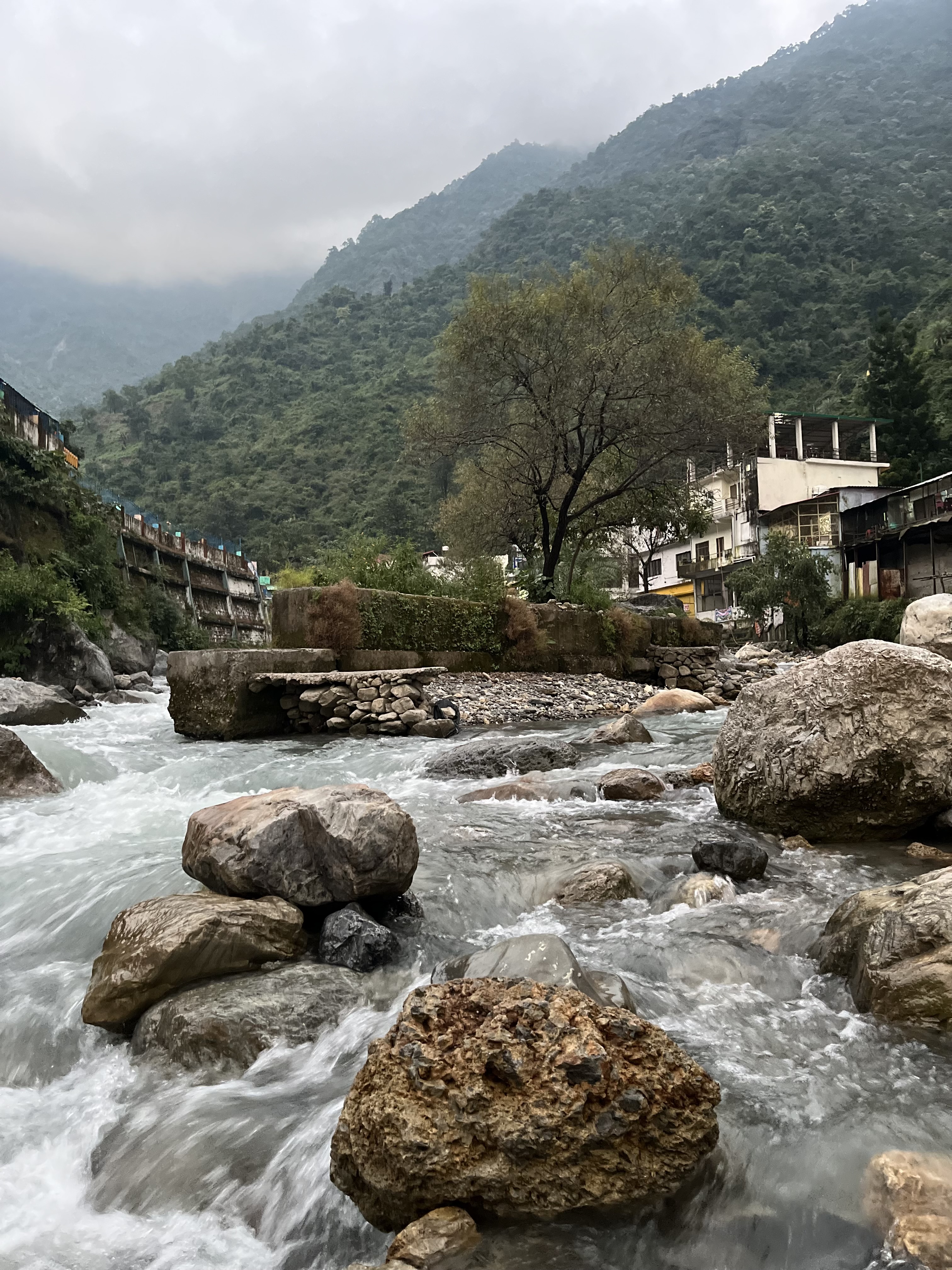Discover the 12 Jyotirlinga in India: A Spiritual Journey
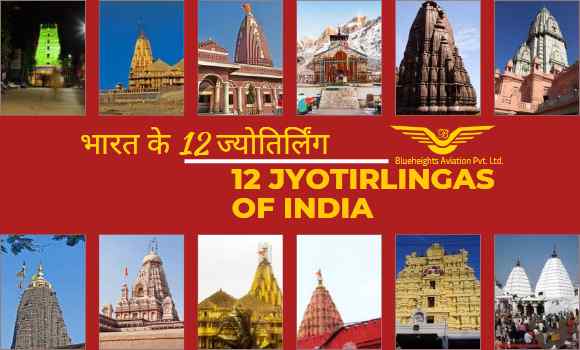
India is home to 12 revered Jyotirlingas, each dedicated to Lord Shiva and spread across different regions of the country. These Jyotirlinga temples are highly significant in Hindu spirituality, representing the divine and infinite nature of Shiva. The 12 Jyotirlingas Yatra is a highly sought-after pilgrimage, and Blueheights Aviation offers the perfect way to experience this sacred journey in comfort and luxury. Our Jyotirlinga tour packages include helicopter services, making it possible to visit these temples in a time-efficient and luxurious manner.
Book your 12 Jyotirlinga Tour today with Blueheights Aviation and experience an unforgettable spiritual journey across India, combining convenience, comfort, and divine blessings.
Introduction to the Jyotirlinga and Lord Shiva.
The Jyotirlinga are considered to be the most sacred shrines of Lord Shiva, one of the most revered deities in Hinduism. According to Hindu mythology, Lord Shiva is the destroyer of evil and the transformer of the universe. The Jyotirlinga are believed to be the physical manifestation of Lord Shiva's divine energy, and visiting them is considered to be a way of seeking his blessings and spiritual enlightenment. Let's explore the 12 Jyotirlinga and their significance in more detail.
The 12 Jyotirlinga and their significance.
The 12 Jyotirlinga are spread across India, each with its own unique history and significance. They are located in Somnath, Mallikarjuna, Mahakaleshwar, Omkareshwar, Kedarnath, Bhimashankar, Viswanath, Triambakeshwar, Vaidyanath, Nageshwar, Rameshwaram, and Grishneshwar. Each Jyotirlinga is believed to represent a different aspect of Lord Shiva's energy and is associated with a specific legend or myth. Visiting all 12 Jyotirlinga is considered to be a significant pilgrimage for Hindus and is believed to bring spiritual enlightenment and blessings from Lord Shiva.
1.Somnath Jyotirlinga - The first Jyotirlinga.
Somnath Jyotirlinga is located in the state of Gujarat and is considered to be the first Jyotirlinga. It is believed to have been built by the Moon God, Soma, in honor of Lord Shiva. The temple has been destroyed and rebuilt several times throughout history, with the current structure being built in 1951. The temple is located on the shores of the Arabian Sea and is a popular pilgrimage site for Hindus. It is believed that visiting Somnath Jyotirlinga can help one attain moksha or liberation from the cycle of birth and death.
The Somnath Jyotirlinga is a significant pilgrimage site for Hindus, and it is believed that Lord Krishna himself visited this temple. The temple has a rich history, with several legends and stories associated with it. One such story is that the temple was destroyed and rebuilt several times by different rulers, including Mahmud of Ghazni, who is said to have looted the temple of its riches. Despite the destruction, the temple has always been rebuilt, and it stands as a symbol of resilience and devotion. The temple is also known for its beautiful architecture, with intricate carvings and sculptures adorning its walls. Visiting Somnath Jyotirlinga is a must for anyone seeking spiritual enlightenment and a deeper connection with Lord Shiva.
2.Mallikarjuna Jyotirlinga - The second Jyotirlinga.
Mallikarjuna Jyotirlinga is located in the state of Andhra Pradesh and is considered to be the second Jyotirlinga. It is believed to have been built by Lord Shiva himself and is dedicated to Lord Mallikarjuna, an incarnation of Lord Shiva. The temple is located on the Srisailam hill, which is considered to be one of the 18 Shakti Peethas in India. The temple is surrounded by natural beauty and is a popular pilgrimage site for Hindus. It is believed that visiting Mallikarjuna Jyotirlinga can help one attain spiritual enlightenment and blessings from Lord Shiva.
Mallikarjuna Jyotirlinga is a must-visit destination for those seeking spiritual enlightenment and blessings from Lord Shiva. The temple is located on the Srisailam hill, which is surrounded by natural beauty and offers a serene atmosphere for devotees to connect with the divine. According to Hindu mythology, Lord Shiva and his consort Parvati visited this place and stayed here for some time. It is believed that Lord Shiva himself built the temple and dedicated it to Lord Mallikarjuna, an incarnation of himself. The temple is also known for its intricate architecture and beautiful carvings. Visiting Mallikarjuna Jyotirlinga is a unique experience that offers a glimpse into the rich cultural and spiritual heritage of India.
3.Mahakaleshwar Jyotirlinga - The third Jyotirlinga.
Mahakaleshwar Jyotirlinga is located in the city of Ujjain in the state of Madhya Pradesh. It is considered to be the third Jyotirlinga and is dedicated to Lord Shiva in the form of Mahakaleshwar. The temple is situated on the banks of the Shipra River and is one of the most visited pilgrimage sites in India. The temple is known for its unique architecture and is believed to have been built during the 4th century BC. It is said that visiting Mahakaleshwar Jyotirlinga can help one attain peace, prosperity, and spiritual growth.
Mahakaleshwar Jyotirlinga is a must-visit destination for all devotees of Lord Shiva. The temple is open from early morning till late at night, and visitors can witness the daily rituals and offerings made to the deity. The temple is also famous for its Bhasma Aarti, which is a unique ritual where the idol of Lord Shiva is covered in ash and worshipped. The temple complex also houses several other shrines dedicated to various deities, including Lord Ganesha and Goddess Parvati. The city of Ujjain itself is steeped in history and mythology, and visitors can explore the many other temples and historical sites in the area. A visit to Mahakaleshwar Jyotirlinga is a truly spiritual experience that should not be missed.
4.Omkareshwar Jyotirlinga, Madhya Pradesh
Omkareshwar Jyotirlinga is located in the town of Omkareshwar in Madhya Pradesh, India. It is believed to be one of the oldest Jyotirlinga, with references to it dating back to the Vedic period. The temple is situated on an island called Mandhata in the Narmada river, and is accessible by boat. Legend has it that Lord Shiva appeared in the form of a lingam here to defeat the demon Vindhya. The temple complex also includes other shrines dedicated to various deities, and is a popular pilgrimage site for Hindus.
Omkareshwar Jyotirlinga is a must-visit destination for those seeking spiritual enlightenment. The temple complex is a beautiful blend of ancient and modern architecture, with intricate carvings and sculptures adorning the walls. The lingam at Omkareshwar Jyotirlinga is said to be self-manifested, and is considered to be one of the most powerful Jyotirlinga in India. The temple is also surrounded by natural beauty, with the Narmada river flowing by and lush greenery all around. Visitors can take a boat ride to the temple and enjoy the serene surroundings. The temple is especially crowded during the festival of Mahashivratri, when devotees from all over the country come to offer their prayers to Lord Shiva.
5.Baidyanath Jyotirlinga, Jharkhand
Baidyanath Jyotirlinga is located in the town of Deoghar in Jharkhand, India. It is believed to be one of the most sacred Jyotirlinga, with references to it dating back to the Puranas. The temple is dedicated to Lord Shiva, and the lingam here is said to have healing powers. Legend has it that the demon king Ravana worshipped Lord Shiva at this site, and the lingam was established by Lord Vishnu to help Ravana overcome his arrogance. The temple complex also includes other shrines dedicated to various deities, and is a popular pilgrimage site for Hindus.
Baidyanath Jyotirlinga is one of the 12 Jyotirlinga, which are considered to be the most sacred abodes of Lord Shiva. The temple is located on the banks of the river Narmada, and is surrounded by lush green forests. The lingam here is made of smooth black stone, and is said to have been installed by Lord Vishnu himself. The temple complex is spread over a large area, and includes several smaller shrines dedicated to various deities. The main temple is a beautiful example of ancient Indian architecture, with intricate carvings and sculptures adorning its walls. The temple is visited by thousands of devotees every year, who come to seek the blessings of Lord Shiva and to experience the spiritual energy of this sacred site.
6.Bhimashankar Jyotirlinga, Maharashtra
Bhimashankar Jyotirlinga is located in the Sahyadri range of Maharashtra, India. It is believed to be the place where Lord Shiva took the form of Bhima to defeat the demon Tripurasura. The temple is surrounded by lush green forests and is a popular trekking destination. The lingam here is said to be self-manifested and is considered to be one of the most powerful Jyotirlinga. The temple complex also includes other shrines dedicated to various deities, and is a must-visit for devotees of Lord Shiva.
7.Rameshwar Jyotirlinga, Tamil Nadu
Rameshwar Jyotirlinga is located in the town of Rameswaram in Tamil Nadu, India. It is believed to be the place where Lord Shiva appeared as a lingam to bless Lord Rama and his army before they set out to rescue Sita from the demon king Ravana. The temple is situated on the eastern coast of India and is considered to be one of the holiest places for Hindus. The lingam here is made of sand and is believed to have been installed by Lord Rama himself. The temple complex also includes other shrines dedicated to various deities, and is a popular pilgrimage site for devotees of Lord Shiva.
Rameshwar Jyotirlinga is one of the 12 Jyotirlingas, which are considered to be the most sacred abodes of Lord Shiva. The lingam at Rameshwar Jyotirlinga is unique in that it is made of sand, and is said to have been installed by Lord Rama himself. The temple complex is spread over 15 acres and includes several shrines dedicated to various deities. The main temple is a magnificent structure with towering gopurams (entrance towers) and intricate carvings. The temple is also famous for its holy water tanks, which are believed to have healing properties. Devotees come from all over India to offer prayers and seek blessings at this holy site.
8. Nageshwar Jyotirlinga, Gujarat
Nageshwar Jyotirlinga is located in the town of Dwarka in Gujarat, India. It is believed to be the place where Lord Shiva appeared as a self-manifested lingam. The temple is situated on the coast of the Arabian Sea and is considered to be one of the most important pilgrimage sites for Hindus. The lingam here is believed to be one of the 12 Jyotirlingas and is said to have the power to cure all diseases. The temple complex also includes other shrines dedicated to various deities, and is a popular destination for tourists and devotees alike.
Legend has it that a demon named Daruka once lived in the area and terrorized the people. They prayed to Lord Shiva for help, and he appeared as a lingam and defeated the demon. The lingam is said to have been named Nageshwar, meaning "lord of serpents," as it is believed that snakes protect the lingam. The temple is also known for its beautiful architecture, with intricate carvings and sculptures adorning the walls and pillars. Visitors can participate in various rituals and offerings, and the temple hosts several festivals throughout the year. A visit to Nageshwar Jyotirlinga is a must for anyone seeking spiritual enlightenment and a deeper connection to Hindu mythology.
9.Kashi Vishwanath, Varanasi
Kashi Vishwanath is one of the most famous Jyotirlinga in India, located in the holy city of Varanasi. It is believed that Lord Shiva himself resides in this temple, which is also known as the Golden Temple. The temple has been destroyed and rebuilt several times throughout history, but it remains a significant pilgrimage site for devotees of Lord Shiva. The energy and spirituality of Kashi Vishwanath are said to be unparalleled, making it a must-visit destination for anyone on a spiritual journey.
The Kashi Vishwanath temple is located on the banks of the holy river Ganges and is surrounded by narrow lanes and bustling markets. The temple is known for its intricate architecture, with the main shrine adorned with gold plating and intricate carvings. Devotees believe that a visit to this temple can bring them peace, prosperity, and spiritual enlightenment. The temple also hosts several festivals throughout the year, including Mahashivratri and Navratri, which attract thousands of devotees from all over the country. If you are planning a spiritual journey to India, a visit to Kashi Vishwanath in Varanasi should definitely be on your list.
10.Trimbakeshwar Jyotirlinga, Nasik
Trimbakeshwar Jyotirlinga is located in the city of Nasik in Maharashtra and is considered one of the most powerful Jyotirlinga in India. It is believed that Lord Shiva himself resides in this temple, which is situated on the banks of the Godavari River. The temple is known for its unique architecture and is adorned with intricate carvings and sculptures. Devotees believe that a visit to Trimbakeshwar Jyotirlinga can help them attain spiritual enlightenment and liberation from the cycle of birth and death.
Legend has it that the Trimbakeshwar Jyotirlinga is the place where Lord Shiva released the holy river Godavari from his hair. The temple is also home to several other deities, including Lord Vishnu and Lord Ganesh. The architecture of the temple is a blend of North Indian and South Indian styles, with a towering spire that reaches up to 73 meters in height. The temple is also surrounded by lush greenery, making it a peaceful and serene place to visit. Devotees flock to Trimbakeshwar Jyotirlinga throughout the year, but the most auspicious time to visit is during the Maha Shivaratri festival, which is celebrated with great fervor and devotion.
11.Kedarnath Jyotirlinga, Uttarakhand
Kedarnath Jyotirlinga is located in the picturesque town of Kedarnath in Uttarakhand. It is believed that the temple was built by the Pandavas during the Mahabharata era and is one of the most revered Jyotirlinga in India. The temple is situated at an altitude of 3,583 meters above sea level and is surrounded by snow-capped mountains and lush green forests. The temple is open to visitors only for six months in a year, from April to November, due to extreme weather conditions. A visit to Kedarnath Jyotirlinga is considered a once-in-a-lifetime spiritual experience by devotees.
Legend has it that Kedarnath Jyotirlinga is the place where Lord Shiva appeared in the form of a Jyotirlinga to bless his devotees. The temple is built in the traditional North Indian style of architecture and is adorned with intricate carvings and sculptures. The main deity of the temple is a conical-shaped rock, which is worshipped as Lord Shiva. The temple complex also houses other shrines dedicated to various deities. The trek to Kedarnath Jyotirlinga is considered a challenging one, but the breathtaking views of the Himalayas and the serene surroundings make it a memorable experience. Devotees believe that a visit to Kedarnath Jyotirlinga can wash away their sins and bring them closer to Lord Shiva.
12. Ghrishneshwar Jyotirlinga, Aurangabad
Ghrishneshwar Jyotirlinga is located in the city of Aurangabad in Maharashtra. It is believed to be the last Jyotirlinga to be discovered and is also known as the Dhushmeshwar temple. The temple is dedicated to Lord Shiva and is surrounded by beautiful gardens and a large pond. The temple is also famous for its intricate carvings and architecture. It is said that a visit to Ghrishneshwar Jyotirlinga can bring peace and prosperity to one's life.
Frequently Asked Questions (FAQ) About the 12 Jyotirlingas
1.What are the 12 Jyotirlingas? The 12 Jyotirlingas are sacred Hindu shrines dedicated to Lord Shiva, spread across different parts of India. They are believed to be self-manifested forms of Lord Shiva and are highly revered by devotees.
2.Where are the 12 Jyotirlingas located? The 12 Jyotirlingas are located in:
- Somnath in Gujarat
- Mallikarjuna in Andhra Pradesh
- Mahakaleshwar in Madhya Pradesh
- Omkareshwar in Madhya Pradesh
- Kedarnath in Uttarakhand
- Bhimashankar in Maharashtra
- Kashi Vishwanath in Uttar Pradesh
- Trimbakeshwar in Maharashtra
- Vaidyanath in Jharkhand
- Nageshwar in Gujarat
- Ramanathaswamy in Tamil Nadu
- Grishneshwar in Maharashtra
3.What is the significance of the 12 Jyotirlingas? The 12 Jyotirlingas hold immense religious significance in Hinduism. They are considered powerful manifestations of Lord Shiva and are believed to bestow blessings, prosperity, and spiritual enlightenment upon devotees who visit and worship at these sacred sites.
4.What is the history behind each Jyotirlinga?
Each Jyotirlinga has its own unique history and significance associated with various mythological and historical events. For example:
- Somnath is believed to be the first among the 12 Jyotirlingas and holds a significant place in Hindu mythology.
- Mallikarjuna is associated with the story of Lord Shiva and Goddess Parvati.
- Kedarnath is linked to the Pandavas from the epic Mahabharata.
- Ramanathaswamy has connections to the Ramayana, the epic of Lord Rama.
5.How can one visit the 12 Jyotirlingas? Devotees often embark on a spiritual journey known as "Jyotirlinga Yatra" to visit and pay homage to all 12 Jyotirlingas. Several travel agencies and pilgrimage organizers offer specialized tour packages for this purpose, making it easier for devotees to undertake this sacred journey.
6.What rituals are performed at the 12 Jyotirlingas? Various rituals, including abhishekam (ritual bathing of the deity), aarti (offering of light to the deity), and special prayers, are performed at the 12 Jyotirlingas to seek the blessings of Lord Shiva. Devotees also offer flowers, fruits, and other offerings as a sign of devotion and reverence.
7. Are there specific timings to visit the Jyotirlingas? The timings for darshan (viewing of the deity) and rituals may vary from temple to temple. It's advisable to check the official website or inquire locally about the timings and any special ceremonies taking place during your visit.
Why Choose the 12 Jyotirlinga Yatra by Helicopter?
Visiting the 12 Jyotirlingas in India is a once-in-a-lifetime spiritual journey. While traditional travel can be time-consuming and physically demanding, Blueheights Aviation offers helicopter services to make your pilgrimage efficient, luxurious, and memorable. Here’s why you should choose our Jyotirlinga Yatra by Helicopter:
- Time-Saving: The helicopter tour allows you to visit multiple Jyotirlinga temples in a fraction of the time it would take by road or foot.
- Luxury and Comfort: Enjoy a comfortable and hassle-free journey with VIP services, personalized assistance, and priority darshan at each temple.
- Breathtaking Views: Take in the spectacular aerial views of the Himalayas, the sacred temples, and the natural landscapes that surround these revered spots.
- Exclusive Helicopter Services: Our well-maintained helicopters, professional pilots, and exclusive tour packages ensure a safe and serene experience throughout your pilgrimage.
- Customized Packages: Choose from a variety of Jyotirlinga tour packages—complete 12 Jyotirlinga tours or select a customized tour focusing on your specific spiritual needs.
Explore the Jyotirlinga Tour Packages
Blueheights Aviation offers several Jyotirlinga Yatra packages to suit your needs, whether you’re looking to visit all 12 temples or just a few. Our helicopter services are designed to maximize your experience and minimize travel time.
- Complete 12 Jyotirlinga Tour Package: For those seeking the full 12 Jyotirlinga pilgrimage experience, this comprehensive package covers all 12 sacred temples across India. This package includes helicopter services, VIP darshan at each temple, comfortable accommodations, and more.
- Customized Jyotirlinga Tour Package: For those with specific temples in mind, we offer personalized Jyotirlinga tours. Visit the temples that hold the most significance to you, with all the conveniences of helicopter travel.
- Shortened Jyotirlinga Pilgrimage Package: If you have limited time, our shortened Jyotirlinga pilgrimagepackage will allow you to visit a select few temples, ensuring you can complete your spiritual journey in less time without sacrificing comfort.
Why Book Your 12 Jyotirlinga Tour with Blueheights Aviation?
- Safe and Efficient Travel: We provide well-maintained helicopters and experienced pilots, ensuring a smooth and safe journey as you embark on your Jyotirlinga pilgrimage.
- Luxurious Experience: Enjoy the comfort of exclusive services, including private helicopter rides, luxury accommodations, and personalized assistance at every temple.
- Customized Itinerary: We understand that every pilgrimage is unique, which is why we offer flexible itinerariesfor your Jyotirlinga tour.
- VIP Darshan Services: Skip the long lines and enjoy priority darshan at each temple, saving you time and allowing you to focus on the spiritual aspect of your visit.
- Exclusive Helicopter Tour Packages: Choose from our helicopter packages that are tailored to suit your schedule and preferences.
Book Your 12 Jyotirlinga Yatra Today
A 12 Jyotirlinga tour is the perfect way to seek Lord Shiva’s blessings while exploring the beauty of India. With Blueheights Aviation, you can complete your Jyotirlinga pilgrimage quickly and comfortably. Book your tour today and experience the divine journey like never before.
For more information or to book your 12 Jyotirlinga Tour, visit our page or contact us to discuss your customized requirements
YOU MIGHT ALSO LIKE:

